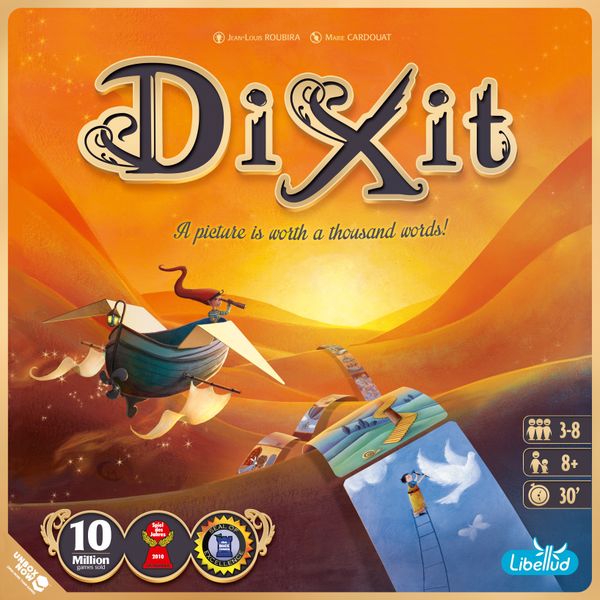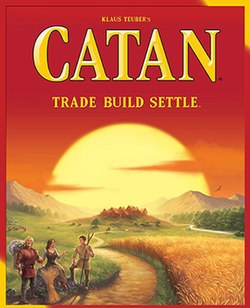Play, Learn, Connect: Bringing the Power of Games to Your Library or Classroom

Did you know that November is International Gaming Month? When I was in the district, I taught a gaming course and brought board games into study halls as a way to help students connect, unwind, and think critically—all while having fun. With students often experiencing too many study halls and a decline in homework, they’re left with time to fill and a need for real, meaningful engagement. Board games are a simple but powerful way to build connections, and they offer an alternative to screens that actually gets students talking, strategizing, and even laughing together.
What’s great is that study hall gaming isn’t about popularity or social cliques; it’s just about who’s free to play. Chess was popular early on, but games like *Blokus* and *UNO* quickly joined the favorites. The trick? It has to be quick and engaging—a 30-minute game that works in the school setting.
Curious about adding new games to your library? You can enter a drawing for free board games by filling out this form from the ALA Games & Gaming Roundtable. They’ve also put together free promotional materials and a variety of print-and-play games that make it easy to jumpstart gaming sessions at your school. Here are some great game picks to consider adding to your collection!
Some great games you may want to consider adding to your collection

 Dixit (Disney Version), one of my favorites, combines whimsical imagery with storytelling mechanics similar to Apples to Apples. Each player receives six beautifully illustrated cards, filled with surreal and enchanting scenes. One player begins as the Storyteller, choosing a card from their hand and describing it with a word, phrase, or sound—enough to give a hint but not too much to make it obvious. The other players try to match the Storyteller’s card by choosing one from their own hand that best fits the description. Once selected, the Storyteller shuffles and reveals all chosen cards face-up. Everyone then votes on which card they think inspired the Storyteller’s clue, and points are awarded based on how accurately players guessed. Beyond gameplay, the Disney Dixit cards are wonderful prompts for creative activities like writing or visual storytelling. The images can spark unique connections, inspire descriptive writing, or be used in matching games exploring thematic links.
Dixit (Disney Version), one of my favorites, combines whimsical imagery with storytelling mechanics similar to Apples to Apples. Each player receives six beautifully illustrated cards, filled with surreal and enchanting scenes. One player begins as the Storyteller, choosing a card from their hand and describing it with a word, phrase, or sound—enough to give a hint but not too much to make it obvious. The other players try to match the Storyteller’s card by choosing one from their own hand that best fits the description. Once selected, the Storyteller shuffles and reveals all chosen cards face-up. Everyone then votes on which card they think inspired the Storyteller’s clue, and points are awarded based on how accurately players guessed. Beyond gameplay, the Disney Dixit cards are wonderful prompts for creative activities like writing or visual storytelling. The images can spark unique connections, inspire descriptive writing, or be used in matching games exploring thematic links.
 Catan has quickly become a favorite of mine. I’ve had it in my collection for years, and what stands out is its flexibility in connecting to both history and math. It’s a resource-management and strategy game that introduces students to probability through dice rolls, adding a layer of authentic learning. Rather than just rolling dice for theoretical results, students experience how probability directly impacts gameplay, making abstract concepts more engaging.
Catan has quickly become a favorite of mine. I’ve had it in my collection for years, and what stands out is its flexibility in connecting to both history and math. It’s a resource-management and strategy game that introduces students to probability through dice rolls, adding a layer of authentic learning. Rather than just rolling dice for theoretical results, students experience how probability directly impacts gameplay, making abstract concepts more engaging.
The trading and building elements mirror historical themes, where negotiation is a “give and take,” showing how each side might benefit—or not—depending on outcomes. While Catan requires more than a quick 30 minutes, it could be adapted for classroom play by having each class period take over the game’s progress, allowing students to engage in strategy and negotiation across sessions, deepening their understanding of historical trade and resource management.
Expansions: Seafarers; Cities & Knights; Traders & Barbarians; Treasures, Dragons and Adventurers; Stargarers; Histories Settlers of America; New Energies


Giant UNO is a huge hit during library study halls, connecting perfectly with educational and social-emotional learning (SEL) goals. Students are always excited to play, and it’s a joy to watch them dive into the oversized version of this classic game. Just like traditional UNO, players race to empty their hands by matching cards by color or number, while challenge and wild cards add an exciting twist.
The giant cards add a fun, interactive element, and the blank wild cards allow students to get creative, adding personalized challenges or actions that make the game their own. Giant UNO is also colorblind accessible, featuring special graphic symbols on each card, so all students can fully participate. It’s an engaging way to foster social interaction, reinforce turn-taking and strategy, and encourage laughter—all essential components of SEL in a library setting.
 Tsuro – The Game of The Path is a quick, engaging, and highly adaptable game that enhances learning across multiple subjects while also supporting social-emotional learning (SEL). Each session can last as little as 10 minutes or stretch a bit longer, depending on player choices and strategy. With its unique dynamic—more players typically result in faster games due to intersecting paths—Tsuro is perfect for busy classroom settings. It can accommodate large groups, making it ideal for classes or study halls, with more players adding excitement and increasing social interactions.
Tsuro – The Game of The Path is a quick, engaging, and highly adaptable game that enhances learning across multiple subjects while also supporting social-emotional learning (SEL). Each session can last as little as 10 minutes or stretch a bit longer, depending on player choices and strategy. With its unique dynamic—more players typically result in faster games due to intersecting paths—Tsuro is perfect for busy classroom settings. It can accommodate large groups, making it ideal for classes or study halls, with more players adding excitement and increasing social interactions.
In math, Tsuro serves as a hands-on tool for exploring geometry and spatial reasoning. As students create continuous paths, they encounter concepts like angles, symmetry, and mapping, making abstract ideas tangible. For English, *Tsuro* provides a foundation for storytelling, with each tile placement and player encounter adding depth to an unfolding narrative. As students pass each other, they can imagine characters crossing paths, adding twists and new chapters that bring creativity and complexity to their stories.
With its blend of SEL, strategic thinking, and academic skills, Tsuro invites students to think creatively and collaboratively, fitting seamlessly into short or extended class /pic1301853.jpg) periods. It’s a flexible, inclusive, and enriching experience that brings educational value to any group size.
periods. It’s a flexible, inclusive, and enriching experience that brings educational value to any group size.
With the introduction of Tsuro of the Seas, there’s an exciting new dimension: sea monsters! In this version, players not only navigate paths to avoid each other and the board’s edge but must also contend with monstrous sea creatures that add an unpredictable element to the game. At the start of each turn, a dice roll determines the movement of these creatures, creating a shifting landscape where tiles are replaced or moved, keeping players on their toes.
These games go beyond passing time—they provide authentic social interaction, build critical thinking, and encourage face-to-face engagement. By choosing games that are easy to learn and short enough to fit into a class period, you’re offering students an alternative to screens that’s both fun and enriching. Leave a comment with your favorite video or board game!




